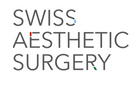Facial surgery
Facelift
As the face ages, not only is there a loss of skin elasticity, but also a redistribution of deeper tissue. Many techniques are now available, and various methods can be used depending on your age group, type of problem and requirements. There is no single “facelift”: rather, there are various techniques, so it’s a matter of deciding which one is best suited to the particular type of person and their specific needs.
Facelifts can be carried out using different methods such as: the mini facelift, SMAS facelift, forehead lift, eyebrow lift, superficial subciliary lift, MACS facelift, mid facelift and RARE facelift.
Further information on facelifts:
- You can also classify facelifts according to the facial area being treated. You have the option of a forehead lift and/or browlift, face and neck lift, which aim to tighten not only the skin but also the muscle (platysma), which is responsible for the aged appearance of the neck.
- There are many causes of ageing of the skin: in addition to genetics (which is a key cause), there are also environmental factors, such as excessive sun exposure, alcohol and tobacco abuse, emotional stress, poor nutrition, skin diseases, major body weight loss and hormonal changes.
- It may be helpful to turn to your plastic surgeon when your appearance does not reflect how you really feel.
- Cosmetic facial surgery often resolves more than just a wrinkle issue: the fundamental idea is to achieve the right distribution of facial volume. The goal is for the final appearance not to look "pulled" but natural.
- The current trend is moving towards soft lifts, such as short scar facelifts: before going under the knife, there are various non-surgical methods that can solve issues of wrinkles and volume, such as hyaluronic acid, Botox, injectable fillers or even skin applications (peeling). Less invasive surgical methods have recently become very popular, such as facelifts using absorbable stitches.
- The plastic surgeon's profession inseparably tied to balance, harmony and common sense.
Blepharoplasty (eyelid lift)
The skin surrounding the eye is especially fine and particularly prone to ageing. We see a gradual change in the eyelids, with the formation of excess skin (dermatochalasis) or wrinkles. Both on the lower and upper eyelid, small "fat pads" may form which – with ageing and tissue being more relaxed – become more visible and prominent. This creates a tired or older appearance. For each of these issues, there is a specific treatment. In extreme cases, the visual field can be obstructed, causing functional impairment.
After thorough disinfection and usually local anaesthesia, fine incisions are made on the upper eyelid for upper blepharoplasty, and directly below the eyelashes for the lower eyelid. In some cases, it is worthwhile extending the cut to one side when combining the simple blepharoplasty operation with other procedures. The excess skin and fat accumulation are removed or repositioned, and other structures are firmed or tightened. Sometimes it is advisable to choose the so-called conjunctival incision, so that scars do not remain on the lower eyelid.
Rhinoplasty (nose job)
The nose is an important organ both from a functional and cosmetic point of view. Being in the middle of the face, it plays a key role in defining a person's overall appearance. Rhinoplasty involves reshaping the nose based on the patient’s wishes, in harmony with the rest of their face.
Shaping of the nasal septum may be carried out in cases of difficulty breathing or deformities of the nasal pyramid. Cosmetic and functional aspects are often linked. Normally, rhinoseptoplasty is performed under general anaesthesia. In special cases, the surgery can be performed under local anaesthesia. The procedure modifies the bridge of the nose, which is made up of bone and cartilage. For the tip, the cartilage is shaped. In the case of a deviated nose, the surgeon will also operate on the nasal septum. The dermal-cutaneous surface is not normally altered, as it will adapt to the new supporting structure modified by the surgeon. Sometimes a plastic reconstruction or correction of "recesses" in the nasal dorsum is necessary, following trauma or previous surgeries.
The incisions are made inside the nostrils. In complex cases, skin incision may be necessary at the columella (structure separating the nostrils) to achieve optimal results. At the end of the procedure, pads are applied, which are then removed a few days later. A dressing with a plaster or hard nasal mask is put in place and removed after ten days. Social activities can be resumed once the swelling and bruising disappears. The final results can only be seen after several months.
Otoplasty (ear correction)
This procedure corrects deformities of the auricle. The most common imperfection is "protruding ears". The surgery is usually carried out under local anaesthesia for adults, and general anaesthesia for young children. It can be performed from school age. The procedure consists of reshaping the ear cartilage and restoring the right distance between the ear and skull, recreating the natural folds of the auricle itself.
For the first week after surgery, a modelling dressing is required. An elastic band is then worn for another 2-3 weeks.








